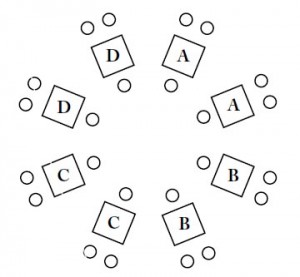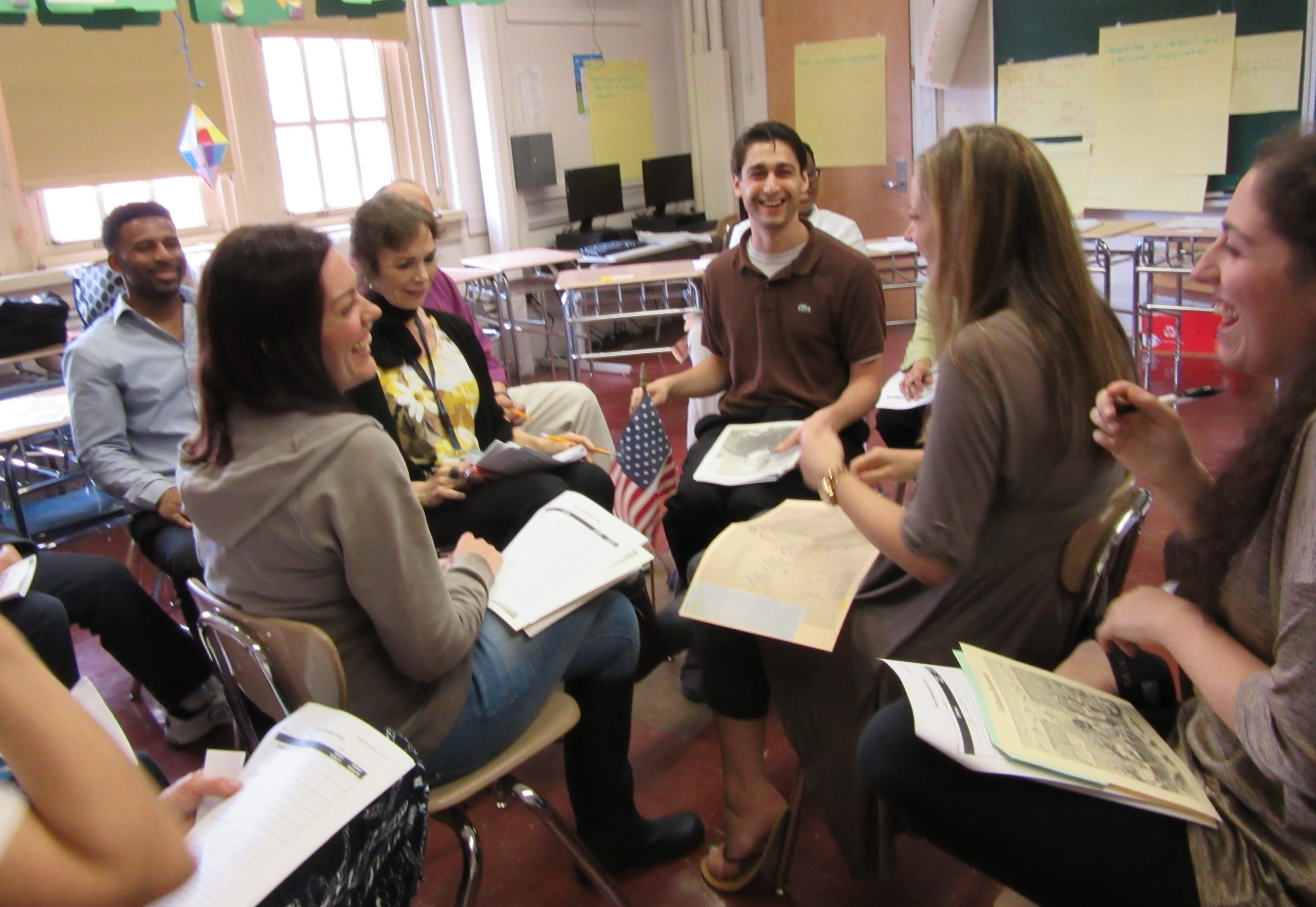Stix Discussion
The Stix Discussion (Stix 1999) is a discussion strategy that has four distinct viewpoints as well as an inner circle and an outer circle that equally participate in a discussion. This strategy is a modification of the inner-outer circle or fishbowl discussion. The students in the inner circle and the outer circle will change roles, so everyone gets an equal chance to participate. This strategy is appropriate for middle school through college-level classrooms.
This strategy takes discussions to a more complex level because there are four viewpoints that are argued (as opposed to just two different viewpoints in a regular discussion). All students are actively listening, so they can respond and contribute in one way or another to the discussion. Whether the student has the liberty to speak because they are inside the discussion circle or they are responding to the comments via written notes, everyone has a reason to listen critically.
Preparation
To begin, divide the class into four points of view—two Pro and two Con—on any given controversial topic. What makes this strategy interesting is that all four viewpoints come together to discuss the topic.
1. Write or locate information guides that support each viewpoint and distribute these to students.
2. Give students time to talk about the information in their groups and divide the main points that each of them will defend. Students should perform further research through web searches and extra reading. Information should be shared and discussed in their groups.
3. Jigsaw the groups so each group has at least one member from all four viewpoints. Students should learn about the other perspectives in the new groups. This will help them create stronger positions for their own point of view.
Set-up

Stix Discussion Diagram
On the day of the discussion, place one-third of the chairs in an inner circle. Behind each inner circle chair, place a desk. Behind each desk, place two or three chairs. All chairs should be facing toward the center of the circle. This will create an inner circle and an outer circle. See the diagram below for a sample seating diagram.
The Simulation
The simulation involves having one-third of the students, assigned to each viewpoint, assume the roles of speakers. They can act on the part of judges, legislators, lawyers, advocates of a cause, or spokespersons. These students form the inner ring of the circle and face and confront each other in the discussion. Explain that the inner circle of the discussion will be the only ones who talk during the discussion time. The outer ring consists of the remaining two-thirds of the class. These students will act in the roles of clerks, advisors, aides, or disseminators of information. It is the clerks’ job to use active listening and write suggestions by passing notes to the inner circle participants. In order to avoid interrupting the flow of conversation, the clerk is encouraged to tap the person’s shoulder to notify him or her that there is a note waiting. Without turning around, the student in the inner circle who is actively speaking at the time, raises his or her hand, to receive the note. After five or ten minutes of active engagement, the inner circle changes places with one of the outer circle students. This process is rotated until all students have had the chance to sit in the inner circle.
Once the activity has been described in detail, you may wish to implement negotiable contracting of assessment so that students are aware of the criteria. Samples may include the ability to utilize a clerk’s suggestion, ask questions of other participants, or have respectful behavior while arguing a point.
Stix Discussion can take any form, but don’t be surprised when a verdict or solution remains elusive. The forum is simply an opportunity for students to speak out, voicing their opinions, hopes, and fears. Whatever choices are selected for a Stix Discussion, it is a strategy that gives students the opportunity to share their thoughts with others as well as learn to make good arguments.
Ideas for Assessment
As each student sits in the inner circle, evaluate his or her comments using the following ideas.
• Is the comment relevant?
• Is the comment clear?
• Is the comment persuasive in nature?
• Does the comment make a contribution to the discussion?
These yes and no answers can be used to quickly assess students’ participation. It shows where students might need extra help in making their points. One way of helping students is to model a discussion, pointing out strong, relevant comments from ones that are not as strong or relevant. Or, you can review the discussion with the entire class, pointing out the really strong comments that students made.
After each discussion, ask for each group to pass in their clerk notes, so you can review their thoughts. Or, you can briefly meet for one or two minutes with each group to discuss their participation in the discussion. Have them tell you about the clerk’s notes at this time.
A Stix Discussion in language arts could take the viewpoints of four different characters in a book. Social studies topics can include events from history and four possible viewpoints towards those events. Math discussions might be a little more challenging but could include open-ended ways to solve math problems with each of the four groups representing a different method. Science topics from the news like global warming or the drilling for natural gas make great discussions using this strategy.
Originally published (c) 1998) by Gems of Agate, Advocacy for Gifted and Talented Education, Andi Stix, Ed.D.
Also from (c) 2014 Active Learning Across the Content Areas (Conklin & Stix)





